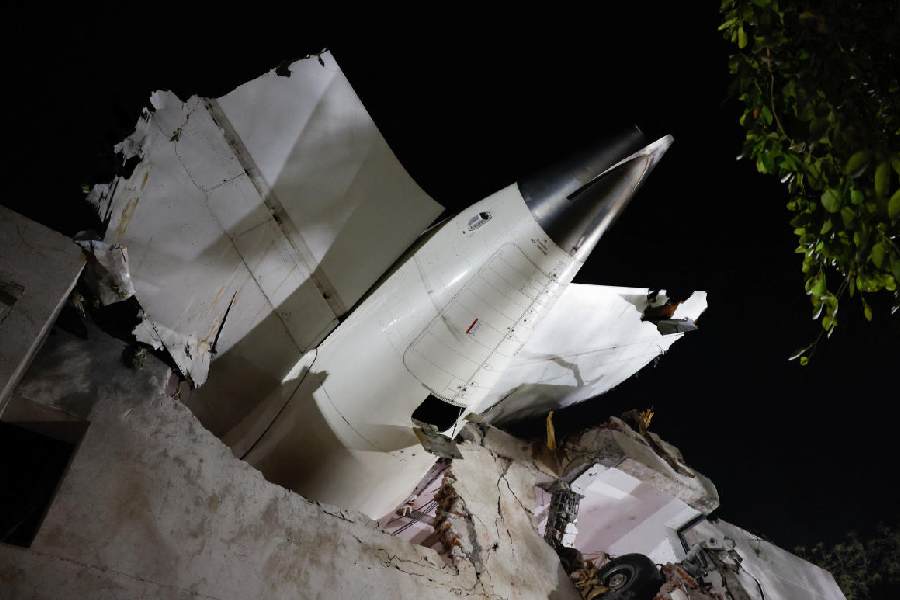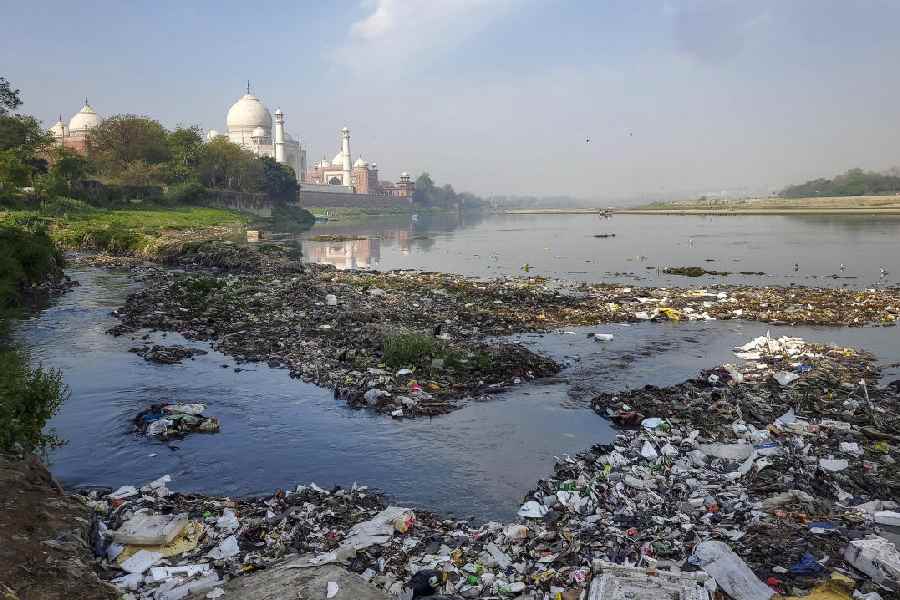|
|
No longer is contemporary Indian art content with traditional material and the conventions of modernism. The dividing line between what can and what can’t be usurped to extend art language has blurred. While inherited legacy endures, artists are catholic in raiding alternative sources. Where these exciting shifts in ideas and attitudes have taken three of them can be gauged once again from CIMA’s 2011 edition of its perceptive Concepts and Ideas show, on till March 9.
If Praneet Soi mines established lexicon to hybridize it into a very individual style, Anjum Singh co-opts industrial material to voice environmental concerns, while Sheba Chhachhi harnesses still and moving images, light and darkness to weave concept and imagery into a compelling set of works. Curiously, this exhibition induces a reference to colour. Or rather, to the studied negation of it so that there seems to be a tight, palpable black at its very core. For one thing, the artists have used more black than colour. For another, the viewer must confront a darkened space on entry, and end his tour in another dark zone whose refrain persists in the mind. But the black isn’t so much a physical component as the experience of a metaphorical dimension, a background score, so to say.
Calcutta boy Soi, now settled in Amsterdam, contours a narrative of humanism. His fibreglass sculpture, Piggyback, recalls the Trojan hero, Aeneas, carrying his old father on his back. But his Pietà, with its black figure kneeling, perhaps to an invisible victim, seems to toast the good Samaritan whose compassion must extend beyond social codes of piety or filial duty. Yet the individual may be condemned to claustrophobic isolation, as in Mariana. Or be dislocated, flung about, moorings lost, like the central black figure in Soi’s riveting mural spread across a whole wall (picture). Complex as the artist’s sensibility is, redemption doesn’t come easy, therefore. Interestingly, investing creativity in murals that must end with the show hints at the artist’s embrace of impermanence, mortality. Is it by transcending the here-and-now that the nomad in him seeks to move on?
Delhi artist Anjum Singh has a tone that’s darkly ironic as she celebrates the intricate structure of a hive; or mourns chopped tree trunks, reinvented with industrial material, the gnarls and knobs of nature replaced by a smoothly synthetic surface. And in Gush, she archly weds kitsch to an industrial process as an iron pipe spews hundreds of aluminium lips, sensuously parted like Marilyn Monroe’s. Ah, well. Isn’t this an age when everything has an artificial, mass-produced clone?
Sheba Chhachhi, also from Delhi, shows a suite of eight black- and-white photographs titled, tellingly, Silver Sap. For it’s an old woman’s body, both anonymous and intimate, that her probing lens ponders: the puckered skin, the anxious veins, the shrunken flesh, the sagging folds.... Anonymous, because the particular extends into a paradigm: battered, battle-weary yet resilient, the woman becomes a symbol of old age itself, turned genderless in its brutal irrelevance to society. And intimate, because every crease and vein cradles fragments of memory, mapping her personal history.
From the ravaged body of an old woman to the ravaged crust of ageing Earth: Chhachhi’s concerns echo each other and merge, critiquing the form society has taken and the route human civilization has followed in its arrogant anthropocentrism. In the three light boxes in the Jamuna series, the moving image of a woman holding up a torn deed against the backdrop of a drying and polluted riverbed suggests both the dispossession of rural and semi-rural communities — their lands taken over for big-budget projects — and the rupture of a tacit contract: that between man and nature.
Chhachhi’s tour de force, however, is Neelkanth, which refers to the Hindu myth of the churning of the ocean which yielded both elixir and effluent, the latter consumed by Shiva to spare the world. You walk into and about this installation, insidiously Kafkaesque, with a sense of unease as the dark is pricked by backlit images of the sense organs — as though they float in grim silence, watching, hearing, lying in wait — while videoscreens glow eerily. The strictly-ordered clusters of stark aluminium towers and the scatter of electric cables — an unplanned element that imports alarm and dread — become a chillingly dehumanized city of the future. The chase for elixir, the artist seems to warn, pollutes man’s senses and the very elements, all of Nature. Technological progress may have been the elixir man has gained. But will he now choke on his own poison?











